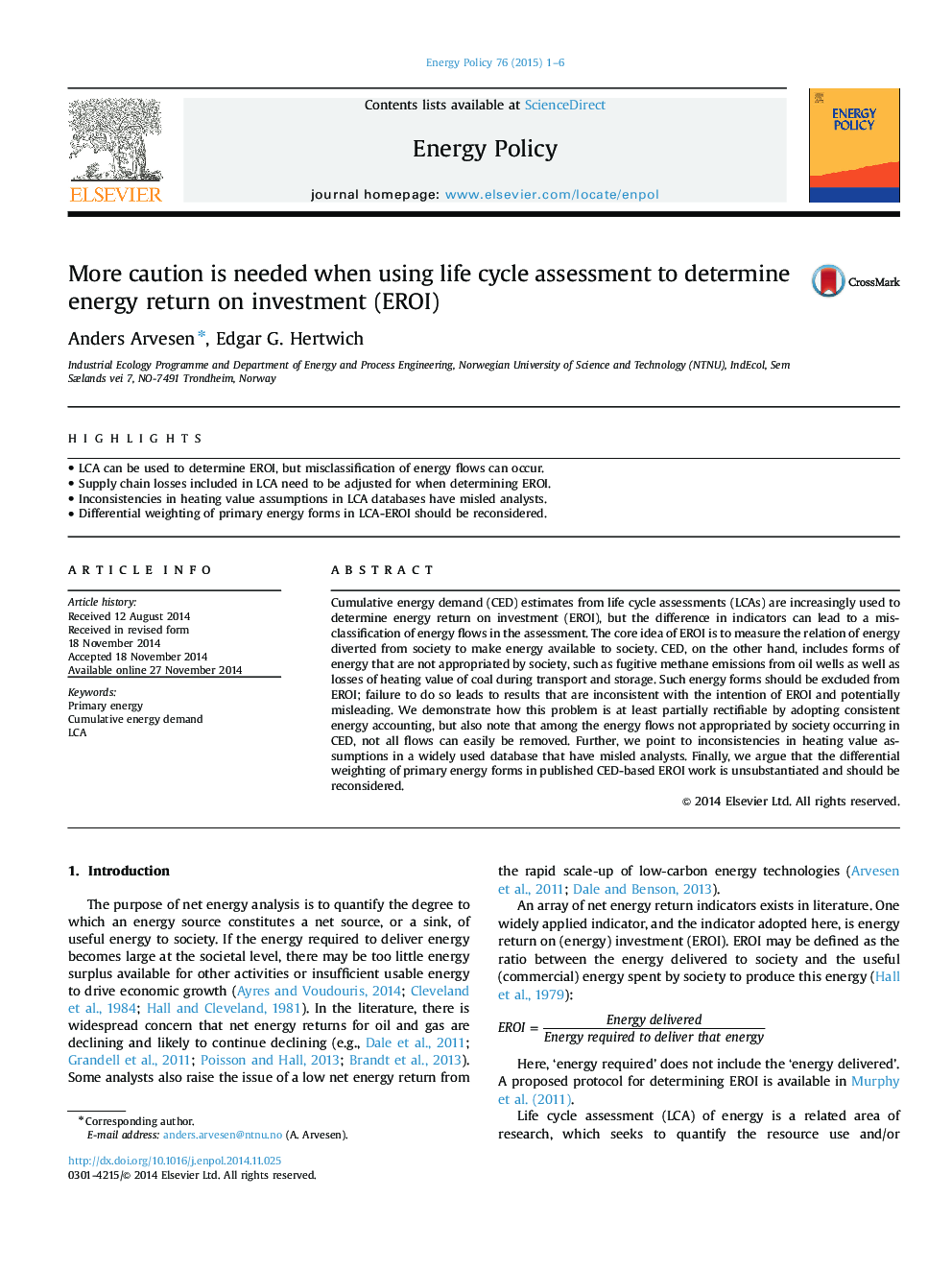| Article ID | Journal | Published Year | Pages | File Type |
|---|---|---|---|---|
| 992861 | Energy Policy | 2015 | 6 Pages |
•LCA can be used to determine EROI, but misclassification of energy flows can occur.•Supply chain losses included in LCA need to be adjusted for when determining EROI.•Inconsistencies in heating value assumptions in LCA databases have misled analysts.•Differential weighting of primary energy forms in LCA-EROI should be reconsidered.
Cumulative energy demand (CED) estimates from life cycle assessments (LCAs) are increasingly used to determine energy return on investment (EROI), but the difference in indicators can lead to a misclassification of energy flows in the assessment. The core idea of EROI is to measure the relation of energy diverted from society to make energy available to society. CED, on the other hand, includes forms of energy that are not appropriated by society, such as fugitive methane emissions from oil wells as well as losses of heating value of coal during transport and storage. Such energy forms should be excluded from EROI; failure to do so leads to results that are inconsistent with the intention of EROI and potentially misleading. We demonstrate how this problem is at least partially rectifiable by adopting consistent energy accounting, but also note that among the energy flows not appropriated by society occurring in CED, not all flows can easily be removed. Further, we point to inconsistencies in heating value assumptions in a widely used database that have misled analysts. Finally, we argue that the differential weighting of primary energy forms in published CED-based EROI work is unsubstantiated and should be reconsidered.
